New plans to be scrutinised carefully by defenders of historic Whalebones fields and woodland
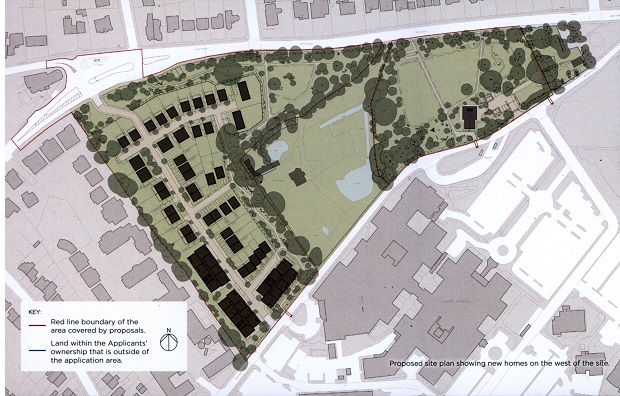
Housebuilders Hill say they are finalising a fresh planning application to redevelop former farmland on the Whalebones state in the Wood Street Conservation Areas, close to Barnet Hospital.
Leaflets delivered to nearby residents give the latest update on what has become a prolonged attempt by the trustees of the Gwyneth Cowing estate to secure permission for residential development while at the same time offering to create a new open space in woods and parkland currently closed to the public.
There would be public footpaths through Whalebones – one from the Wood Street bus stop through to the Barnet Hospital bus terminal and another from opposite the Argyle Road junction to the hospital’s accident and emergency entrance.
After failing to get approval for a previous scheme — and losing a planning appeal in 2021 — Hill promised to take local views into account and revise their plans.
A new design, reducing the number of houses and flats from 152 to 118, was unveiled at an exhibition in March this year.
After a further round of consultations with residents and community groups, Hill are finalising a new application for a revised total of 114 new homes which will be submitted to Barnet Council later this summer.
Hill say they have taken on board comments by residents and the council’s design officer and changes have been made in the height, size and location of the new houses and flats.
There has been an increase in the setback of the development from Wood Street; increased separation between the new estate and the privately-owned Whalebones House; and a reduction in the visibility of an apartment block next to the Elmbank development in Collison Avenue.
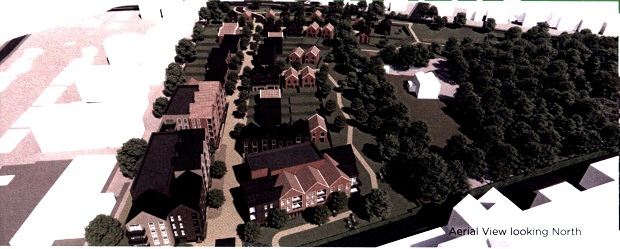
Despite these adjustments, the scale and size of the development – as seen in this artist’s impression looking north from Barnet Hospital – is still regarded as unacceptable by the Barnet Society.
Robin Bishop, who leads on planning issues said the society would study the latest proposals and consult its members, but the scheme “is still far bigger than the society thinks is acceptable for the Wood Street Conservation Area.”
Barnet Residents Association says it too is waiting to see a detailed planning application while acknowledging that the new build has been reduced to 114 new homes and the area set aside as green space increased.
“But there is still work for us to do as we seek assurances over the long-term future of the Whalebones green space.”
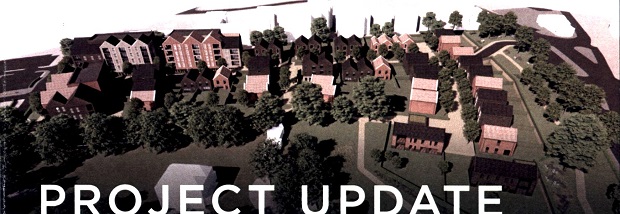
An artist’s impression of the development as it would face on to Wood Street – with a new access road starting opposite The Arkley public house – is said to show the increased setback of the development from the main road.
This has been achieved by “flipping” the houses closest to Wood Street around so that their gardens are closest to the road. The distance between the new homes and Wood Street would now vary from 26 to 40 metres which would limit views into the site.
In its revised scheme – which has dropped plans for houses facing on to Wellhouse Lane – the only development on the field at the junction of Wood Street and Wellhouse Lane would be a new building for the use of Barnet Guild of Artists and Barnet Beekeepers Association.
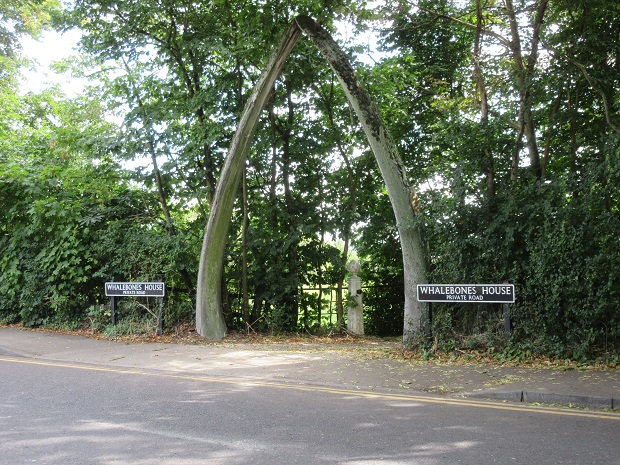
By removing housing from this field, Hill say that that setting the of the historic Whalebones arch would “preserve the view of the arch and retain openness”. This change would also preserve the setting of the privately-owned Whalebones House which is not included in the redevelopment.
Under the scheme land would be set aside in Wellhouse Lane for an agricultural holding beside Well Cottage, home of tenant farmers, Peter and Jill Mason.
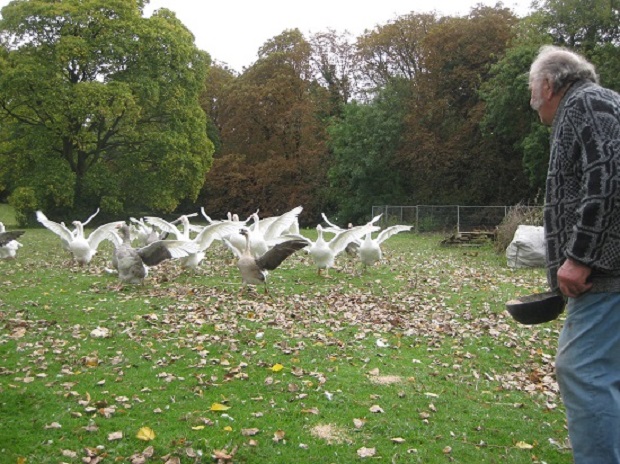
Until recent years, Mr Mason maintained a flock of geese at Whalebones farm, but this is no longer possible because of ill health. At present his wife has only one goose to look after, her nine-year old pet Dotty.
“She’s Dotty, because she was just a dot when I first had her.”
1 thought on “New plans to be scrutinised carefully by defenders of historic Whalebones fields and woodland”
Comments are closed.

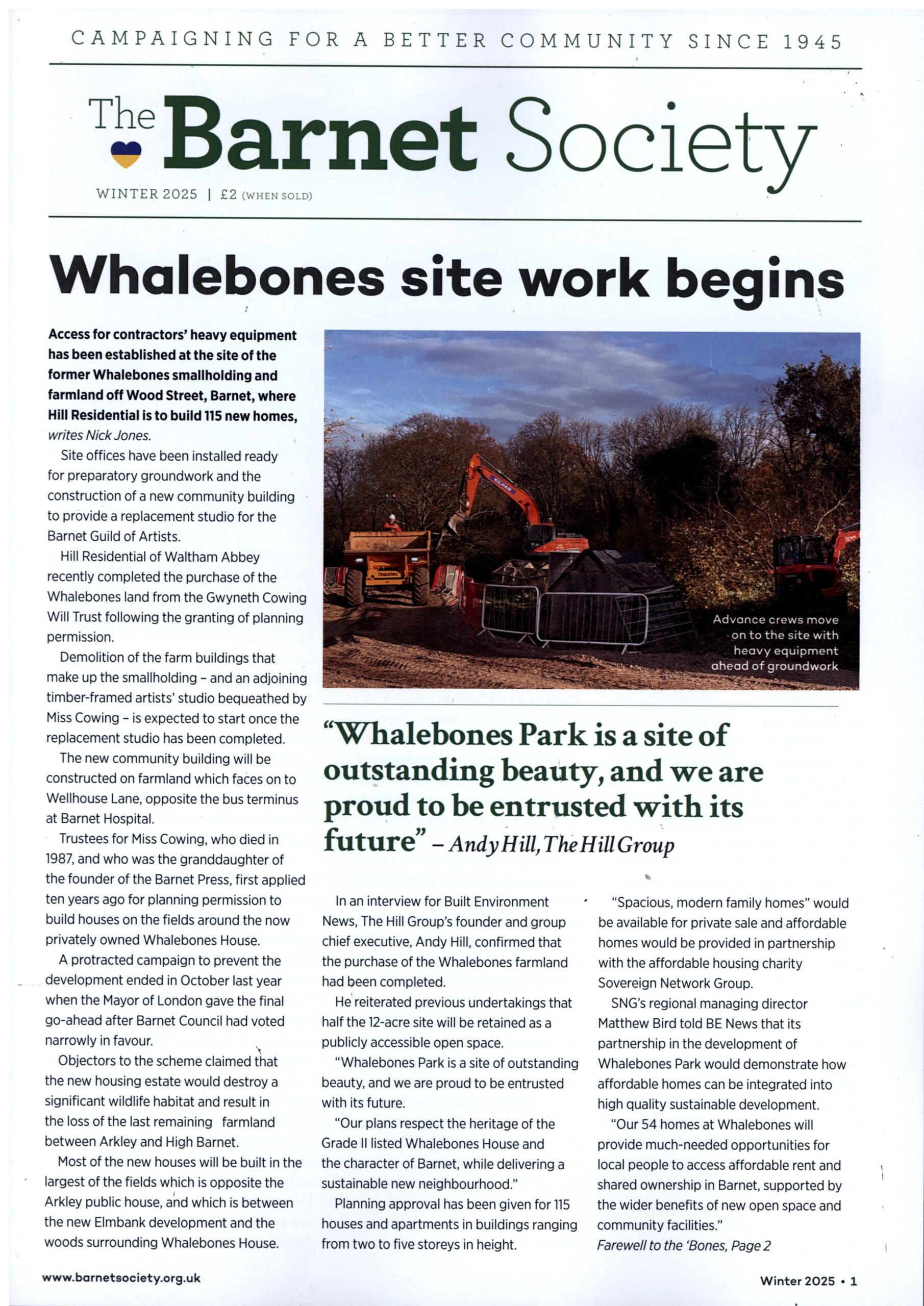
I think the Society are right to scrutinise this application further. 114 new homes is a lot for that small part of wood street. Also, are the developers paying to improve roads, additional schools etc….?